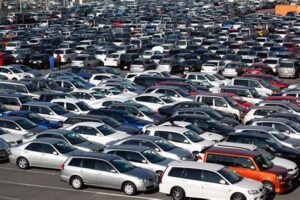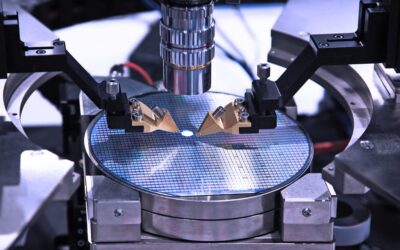
On the note of the recent debates regarding Chinese cars entering the European market with the so-called “green” cars, today’s article focuses on this topic.
The automotive sector is the largest industrial sector in Europe, contributing 10% of the value added to the manufacturing sector. This contribution is even higher in countries like Germany (15%), Hungary, the Czech Republic, and Slovakia (around 20% or more). The automotive industry is also a key customer for the metal, plastics, and electronics sectors. The market is undergoing a major transformation with the electrification of vehicles. For instance, propulsion systems, which typically account for 25% to 30% of a car’s total cost, are becoming simpler and require fewer parts with electric propulsion. The battery, however, is more expensive. This shift in technology is leading to a complete redesign of the European car manufacturing ecosystem.
The transition to ‘green’ cars is happening rapidly in the EU. The market share has surged from 11% to 47% in just two years, with battery electric vehicles (BEVs) leading the way. Chinese-made BEVs are particularly popular. This rise in Chinese automotive presence poses a significant threat to the European automotive industry and the broader European economy. Europe, as the world’s largest car exporter, has historically generated between 70 and 110 billion euros in trade surplus annually from the automotive market over the past decade. Currently, four out of five cars sold in Europe are assembled on the continent, but this trend is declining. In the coming years, Europe is expected to increasingly rely on cars manufactured in China. By 2030, European automakers could collectively lose more than €7 billion in annual net profits.
Nearly a fifth (19.5%) of electric vehicles sold in Europe last year (2023) were made in China, with this figure projected to reach a quarter (25%) by 2024. This forecast coincides with the EU’s consideration of import tariffs to counteract subsidies for China’s EV industry. Therefore, increasing the production of mass-market electric cars and investing in the European battery supply chain are essential for EU carmakers to compete with Chinese brands, though tariffs would also help localize EV manufacturing.
Currently, Chinese imports into Europe are predominantly Tesla, Dacia, and BMW vehicles produced in China. However, it is predicted that Chinese brands could capture 11% of the European EV market in 2024 and 20% by 2027.
However, breaking into an established market as a new player is challenging. Chinese manufacturers must overcome buyer scepticism, a lack of brand recognition, trade protectionism, and the rapid obsolescence of technology. China is often viewed with suspicion by many Western consumers, and its carmakers are hindered by a recent history of producing both sanctioned and unauthorized clones of European cars. Nonetheless, learning from the experiences of Japanese carmakers, Chinese brands are quickly advancing to rival existing alternatives. Despite this, Chinese cars are struggling to find buyers in Europe. Many imported Chinese electric vehicles are accumulating at European ports, with some remaining in port car parks for up to 18 months as manufacturers face difficulties in selling them.
Strategic acquisitions of brands like Volvo, Lotus, and MG have provided Chinese companies with respected names and some of the best engineering expertise globally. Despite these efforts, Chinese automakers have yet to earn the loyalty of customers from established brands like BMW, Porsche, Ferrari, and Ford. For these buyers, brand history, known reliability, and achievements in motorsport are significant factors that Chinese manufacturers, like their Japanese predecessors, will need to develop over time.
References
Allianz Trade. (2024, June). The rise of Chinese cars: a blow to the automotive industry and the economy in Europe. Retrieved from Allianz Trade: https://www.allianz-trade.com/en_BE/news/latest-news/automotive-industry-rise-of-chinese-cars.html
Stacey, T. (2024, April 29). Electric cars pile up at European ports as Chinese firms struggle to find buyers. Retrieved from The Conversation: https://theconversation.com/electric-cars-pile-up-at-european-ports-as-chinese-firms-struggle-to-find-buyers-228473
T&E. (2024, March 27). One in four EVs sold in Europe this year will be made in China – analysis. Retrieved from Transport environment (T&E): https://www.transportenvironment.org/articles/one-in-four-evs-sold-in-europe-this-year-will-be-made-in-china-analysis
Photo:
Parking_lot_at_HAA_Kobe.jpg (5616×3744) (wikimedia.org)



